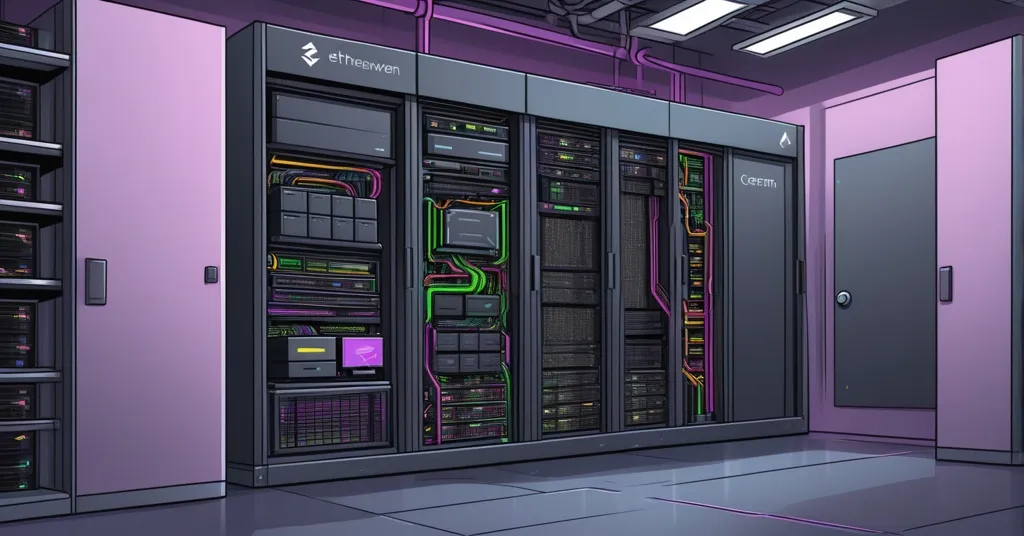CoreWeave’s $1.5B IPO: From Crypto Mining to AI Giant with $14B Market Cap

From Crypto Closet to $1.5B IPO: CoreWeave’s Journey to AI Dominance
From a closet full of GPUs to a $14 billion market cap, CoreWeave’s journey is the stuff of tech legends. Starting as a crypto-mining operation, the company pivoted to become a key player in AI infrastructure, culminating in a $1.5 billion IPO. Yet, the road to success was not without its challenges.
- $1.5B IPO, $14B market cap on first trading day
- Transition from crypto-mining to AI training
- Partnerships with tech giants OpenAI and Microsoft
CoreWeave’s beginnings are as humble as they come. Founded as a side project by hedge fund Hudson Ridge, it started with GPUs, or Graphics Processing Units—chips originally designed for gaming but now crucial for both cryptocurrency mining and AI training—laid out on a pool table. The company focused on mining Ethereum, the second-largest cryptocurrency. Brian Venturo, Chief Strategy Officer, recalls with pride, “We were the largest Ethereum miner in the world for like two and a half years,” using 50,000 Nvidia consumer GPUs. But the real game-changer came when CoreWeave pivoted to AI.
The turning point was a 2022 partnership with EleutherAI, an open-source group working on AI. Venturo reflects, “We thought we were just going to learn how the infrastructure worked… But EleutherAI was working with hundreds of people building AI startups and ‘it was this total springboard moment for us.'” This collaboration opened doors to the lucrative AI training market, which involves using powerful computers to teach artificial intelligence systems how to perform tasks, like recognizing speech or generating images. CoreWeave expanded its operations to 32 data centers with 250,000 GPUs, including the cutting-edge Nvidia Blackwell chips.
Despite the impressive growth, CoreWeave’s IPO faced a less enthusiastic response from investors. Shares opened at $39 and closed at $40, below the anticipated $47-$50 range. Yet, the IPO still raised $1.5 billion, marking the largest AI-related listing to date and the biggest U.S. tech IPO since 2021. The company’s market cap surged to $14 billion on its first trading day, showcasing strong investor interest in AI infrastructure. However, the stock experienced significant volatility post-IPO, reaching $58.60 in early trading, reflecting a 41% increase on one day and an 11% increase the next. For a detailed analysis of the IPO performance, one can refer to scholarly resources.
Financially, CoreWeave isn’t without its challenges. With $7.6 billion in debt and significant repayments looming in two years, the company must navigate a tightrope to ensure continued growth and stability. Yet, its revenue stands at $1.9 billion, with $15 billion under contract, including a massive $12 billion deal with OpenAI. This deal not only made OpenAI CoreWeave’s biggest customer, surpassing even Microsoft, but also positioned the company as a key player in the AI training market. Additionally, OpenAI invested $350 million in CoreWeave stock, further solidifying the partnership.
Brian Venturo acknowledges the role of serendipity in CoreWeave’s success, stating, “There’s so many pieces of luck along the way, it’s crazy.” From the timing of their pivot to AI to strategic partnerships, luck and innovation have played equal parts in this remarkable journey.
CoreWeave’s transition from crypto-mining to AI training is emblematic of broader tech industry trends, where GPUs are increasingly vital for AI applications. The IPO’s initial lukewarm reception may reflect investor caution, but it doesn’t detract from CoreWeave’s significant role in the booming AI sector. As the company continues to leverage open-source collaborations and strategic partnerships, its future in AI infrastructure looks promising, though not without financial hurdles to overcome.
While CoreWeave’s transition to AI has been successful, critics argue that the company’s heavy debt load could pose risks in the volatile tech market. The reliance on debt to fund its expansion raises concerns about its financial health, particularly with significant debt repayments looming. However, the strategic diversification facilitated by the partnership with OpenAI, which helps secure future compute costs and reduces dependency on a single entity like Microsoft, could mitigate some of these risks.
Looking ahead, CoreWeave is well-positioned to capitalize on the growing demand for AI infrastructure. The partnership with OpenAI and the use of Nvidia’s Blackwell GPU architecture, specifically designed for AI workloads, are expected to enhance CoreWeave’s value proposition. Yet, the company must navigate its debt and financial challenges while continuing to innovate and disrupt traditional tech sectors. CoreWeave’s success story underscores the potential for blockchain technologies to pivot and innovate, reinforcing the importance of decentralization and disruption in the tech landscape.
Key Takeaways and Questions
- What was the initial purpose of CoreWeave?
CoreWeave initially started as a crypto-mining operation, using GPUs to mine Ethereum.
- How did CoreWeave transition from crypto-mining to AI training?
CoreWeave transitioned by partnering with EleutherAI, an open-source AI group, which helped them learn about AI training and led to new business opportunities.
- What was the outcome of CoreWeave’s IPO?
CoreWeave’s IPO raised $1.5 billion, but the stock opened and closed below the expected price range, indicating a less enthusiastic response from investors.
- What are the current financial challenges facing CoreWeave?
CoreWeave faces significant debt of $7.6 billion, with repayments due in two years, which may be a concern for investors.
- How has CoreWeave’s partnership with OpenAI impacted its business?
The partnership with OpenAI, culminating in a $12 billion deal and a $350 million investment in CoreWeave stock, has made OpenAI CoreWeave’s biggest customer, surpassing Microsoft.
- What role did luck play in CoreWeave’s success?
Luck played a significant role in CoreWeave’s success, from the timing of their pivot to AI to the strategic partnerships they formed along the way.



